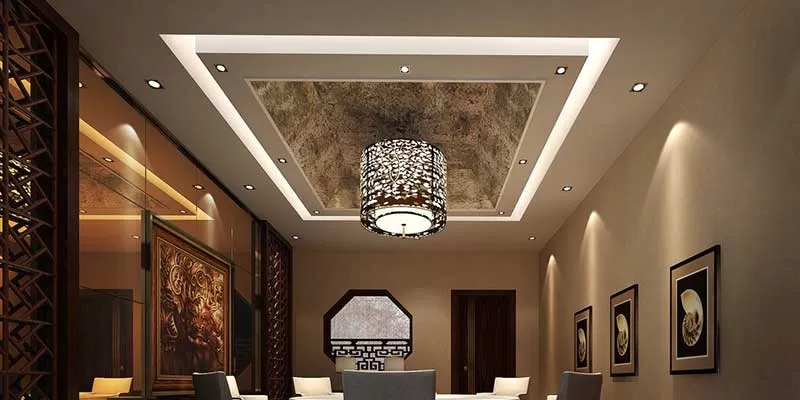Whitewashed ceilings have long since sunk into oblivion, and wallpapering is not relevant. Suspension and tension structures are considered a more practical, durable and stylish option. But which one is better? Our experts dealt with this issue.
Features of ceiling structures

Suspended and tension type structures are used both as a decorative coating and for covering the ceiling. The similarity of both products is that they allow you to avoid the material-intensive and time-consuming process of leveling the working surface. The installation of a plasterboard and PVC ceiling is also a bit similar: a special frame is used to install both of them, only the suspended ceiling is sheathed with sheets of plasterboard, and PVC film is used for tension.
In most cases, the structures in question are only a decorative element, but sometimes it is simply a necessity:
-
In Soviet high-rise buildings and Khrushchevs, the height difference in residential buildings of this type sometimes reaches several centimeters. Ordinary plaster is not enough to solve the problem: it will take a lot of time, effort and a concrete screed. Installing a suspended or PVC ceiling is the simplest and best solution.
-
To decorate a painted surface — if it is planned to repair a room with a ceiling covered with a water-based emulsion (even in several layers), it is easier to install a suspended / tension structure than to remove the paint.
-
When installing spot lighting equipment — of course, it is problematic to install spot lighting without a decorative ceiling — a plasterboard or PVC construction will help create the lighting of the required configuration, and securely hide all communications.
Compare stretch and suspended ceilings

It would seem that similar products, which nevertheless have certain differences between them. Let’s try to figure out which ones.
Installation method and speed
Suspended ceiling — the design is quite finicky — the installation of such a product will require a significant amount of time and effort (especially drywall products). Depending on the complexity of the design and its size, the installation process can take from several days to several weeks. But stretch fabrics are mounted in just a few hours, and the amount of debris after is minimal. The exception is multi-level systems with a lot of decor and the presence of complex lighting fixtures.
Subtleties of care and damage
Tensile structures are not afraid of exposure to moisture and various contaminants, from which the ceiling surface can be cleaned without much difficulty — you only need a damp cloth. But such a product is very susceptible to physical impact (especially from sharp objects). Suspended ceilings are afraid of both moisture and dirt: if stains appear on the surface of the product, you only have to repaint it. But drywall constructions are quite resistant to light blows.
Temperature resistance
PVC is very sensitive to high/low temperatures. For example, if the thermometer shows 0 0C, the surface of the stretch ceiling completely loses its elasticity — the product hardens and cracks. At high temperatures (above +40 0C) PVC softens. Therefore, for premises located outside the house or in harsh climatic conditions, PVC structures are completely unsuitable.
Plasterboard suspended ceilings feel quite normal even with significant temperature fluctuations, so the scope of such products is much wider than that of stretch ones.
Lifetime
High-quality stretch ceiling with careful operation and proper care will last at least 15 years. It does not need restoration, does not change its characteristics and appearance during operation. With hanging products, everything is somewhat more complicated: they need to be updated (with a frequency of 2–3 years). In general, such a product will last about 10 years.
Price
A square meter of false ceiling costs about $25–40, and if there are complex elements and decor, the price increases significantly. The price of stretch ceilings fluctuates in a wide range — from 10 to 100 dollars per square meter. It all depends on the design features of the product, the presence of decorative elements, pattern, texture, shape of the canvas.

Добавить комментарий
Для отправки комментария вам необходимо авторизоваться.